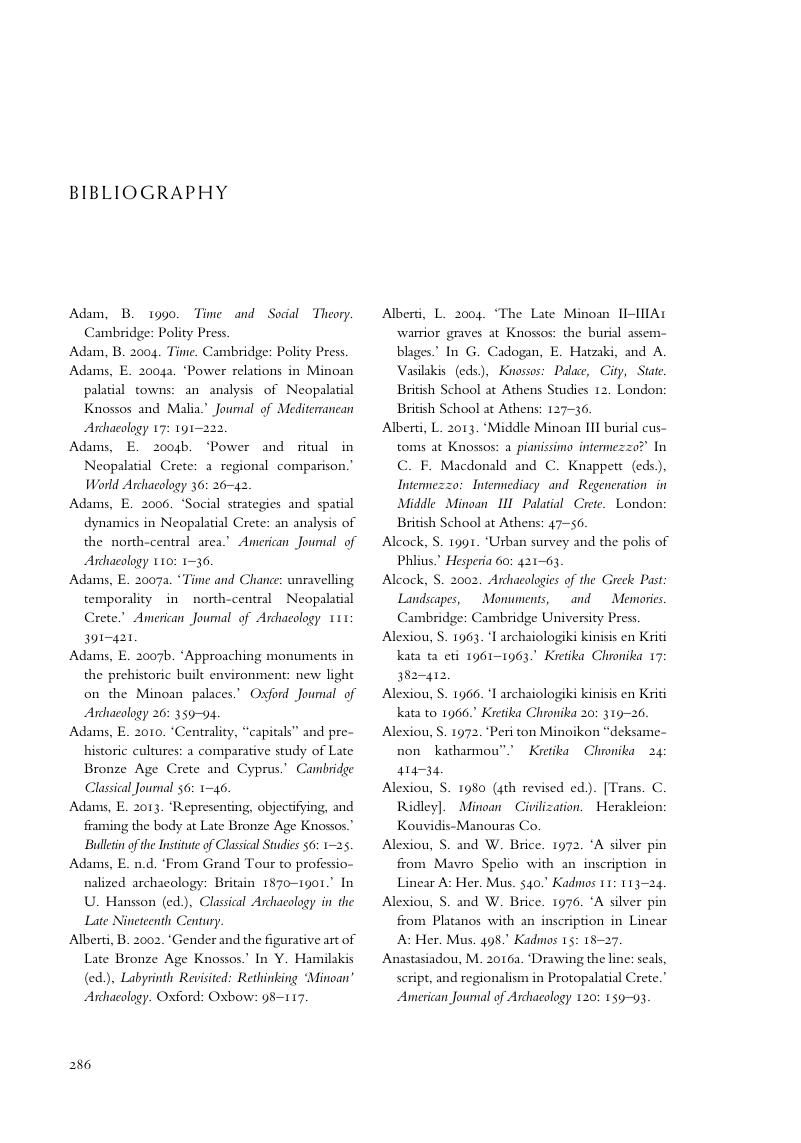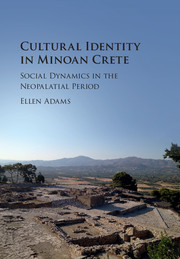Book contents
- Cultural Identity in Minoan Crete
- Cultural Identity in Minoan Crete
- Copyright page
- Contents
- Figures
- Tables
- Preface
- Chapter One Introduction
- Chapter Two The Background to Neopalatial Crete
- Chapter Three Elite Architecture and Artefacts
- Chapter Four Palaces and Their Context
- Chapter Five Other Settlements and Regional Groupings
- Chapter Six The Ritual Landscape and Extra-urban Sanctuaries
- Chapter Seven Literacy, Administration, and Communication
- Chapter Eight The Economy
- Chapter Nine Who Were the Minoans? Self-Representation and Others in Neopalatial Identity
- Chapter Ten Conclusion
- Notes
- Bibliography
- Index
- References
Bibliography
Published online by Cambridge University Press: 21 September 2017
- Cultural Identity in Minoan Crete
- Cultural Identity in Minoan Crete
- Copyright page
- Contents
- Figures
- Tables
- Preface
- Chapter One Introduction
- Chapter Two The Background to Neopalatial Crete
- Chapter Three Elite Architecture and Artefacts
- Chapter Four Palaces and Their Context
- Chapter Five Other Settlements and Regional Groupings
- Chapter Six The Ritual Landscape and Extra-urban Sanctuaries
- Chapter Seven Literacy, Administration, and Communication
- Chapter Eight The Economy
- Chapter Nine Who Were the Minoans? Self-Representation and Others in Neopalatial Identity
- Chapter Ten Conclusion
- Notes
- Bibliography
- Index
- References
Summary

- Type
- Chapter
- Information
- Cultural Identity in Minoan CreteSocial Dynamics in the Neopalatial Period, pp. 240 - 285Publisher: Cambridge University PressPrint publication year: 2017



